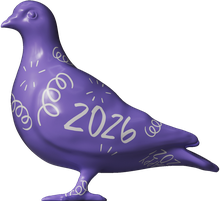10 March 2017 — By Aisling Serrant
My East End stories: Boxing belts to empire maps
Three Londoners share personal stories linked to East End artefacts: a boxing belt, an imperial map, and a mariner's telescope. Their tales weave together threads of immigration, family history and the area's diverse cultural heritage.
Johnny Brown's boxing belt
My name is Lauren Johnson, I work at the Jewish Museum London, where I’m a Learning Officer.
Why have you chosen this object to represent your East End?
I chose the Lonsdale Belt, which was a championship belt awarded to a man called Johnny Brown for boxing. It introduced me to Johnny Brown. He had a pretty amazing career as a boxer and it makes me think back to, there’s been a long line of Jewish boxers in London, starting with Daniel Mendoza from the 18th century.
“In the 18th century, the boxing ring was one environment that new immigrants to London literally fought alongside each other, and with each other”
Especially in the 18th century, the boxing ring was one environment that new immigrants to London – whether Jewish or Irish or African – literally fought alongside each other, and with each other, to climb the social ladder and, sometimes, to get in to polite society. Sort of fighting for a stake in their new country, in their new home. It’s a great story actually.
Interestingly enough one of my ancestors was bare knuckle boxing champion of Britain, a long time ago, I think on an Irish side that I’ve got in me, so it always makes me think of that.
An imperial map for modern London
My name is Julie Begum and I’m representing the Swadhinata Trust, a Bengali community group based in Tower Hamlets, and I’m the chair of that Trust as a volunteer.
Why have you chosen this object to represent your East End?
The object I chose was a map that was created in the 19th century. It’s one of the British Empire and it shows all the dominions of the Empire. From the Americas, to Africa, to Asia, to Australia. And it just shows the range and the scope of the influence that the British Empire had over the world.
One of the areas the British Empire included was the Indian continent and my family are from Bangladesh. So, like many other immigrants, I wouldn’t be here, because it was the East India Company and the connection between Britain and East India Company that sort of are responsible for my presence in Britain.
Do you have a personal connection to the East End?
I was born here in 1968. My family migrated here in the early and late 1960s and I live and work in the East End. It’s my home.
Reminders of a mysterious mariner's mate
I’m Ju Gosling. I’m an artist and I’m Director of Together! 2012, a disability arts organisation.
Why have you chosen this object to represent your East End?
The object I chose was an 18th-century telescope and quadrant, which was used for navigation, and which I assume would still have been in use at the beginning of the 19th century. I chose that because my great-great-great grandfather was living in Stepney and registered as a mariner’s mate and mariners were people who did navigation.
“My great-great grandmother was the daughter of a butcher who was born in Stepney so it’s just going back to that connection”
Ju Gosling, Director, Together! 2012
His son was also born in Stepney and he went to the Royal Hospital School in Greenwich, which would normally mean that he became a mariner. According to my reading, if they left the school they qualified as a mariner's mate automatically. But for whatever reason when he married, at the age of 26 at St Dunstan’s in Stepney, he was actually working as a coach smith and a housepainter. My great-great grandmother was the daughter of a butcher who was born in Stepney so it’s just going back to that connection.
I think one of the things I find interesting, something I have no idea about, is what racial background my great-great-great grandfather had. He had a name which was two kings' names, and the last name of a family that were actually slave owners, so he could have been one of the 5% of sailors in Britain that were black. I think they say between 3% and 5% of the Merchant and Royal Navy fleet were Black from the 1600s onwards. It’s just that it’s a bit hidden from history. So, he really could have been anybody, because apparently West African navigators were much sought after.
Do you have a personal connection to the East End?
Well I’ve been living in Canning Town for over 30 years. The other connection I really found with the museum was that my house was part of, was a house that was heavily bombed in the Blitz. The back of my house, which would have had a single bay and all sorts of other objects, is now kind of mostly wood and glass.
Aisling Serrant is the Family Festivals Organiser at London Museum.







